MXA INTERVIEW: EDDIE COLE IS A SELF-MADE MAN MANY TIMES OVER
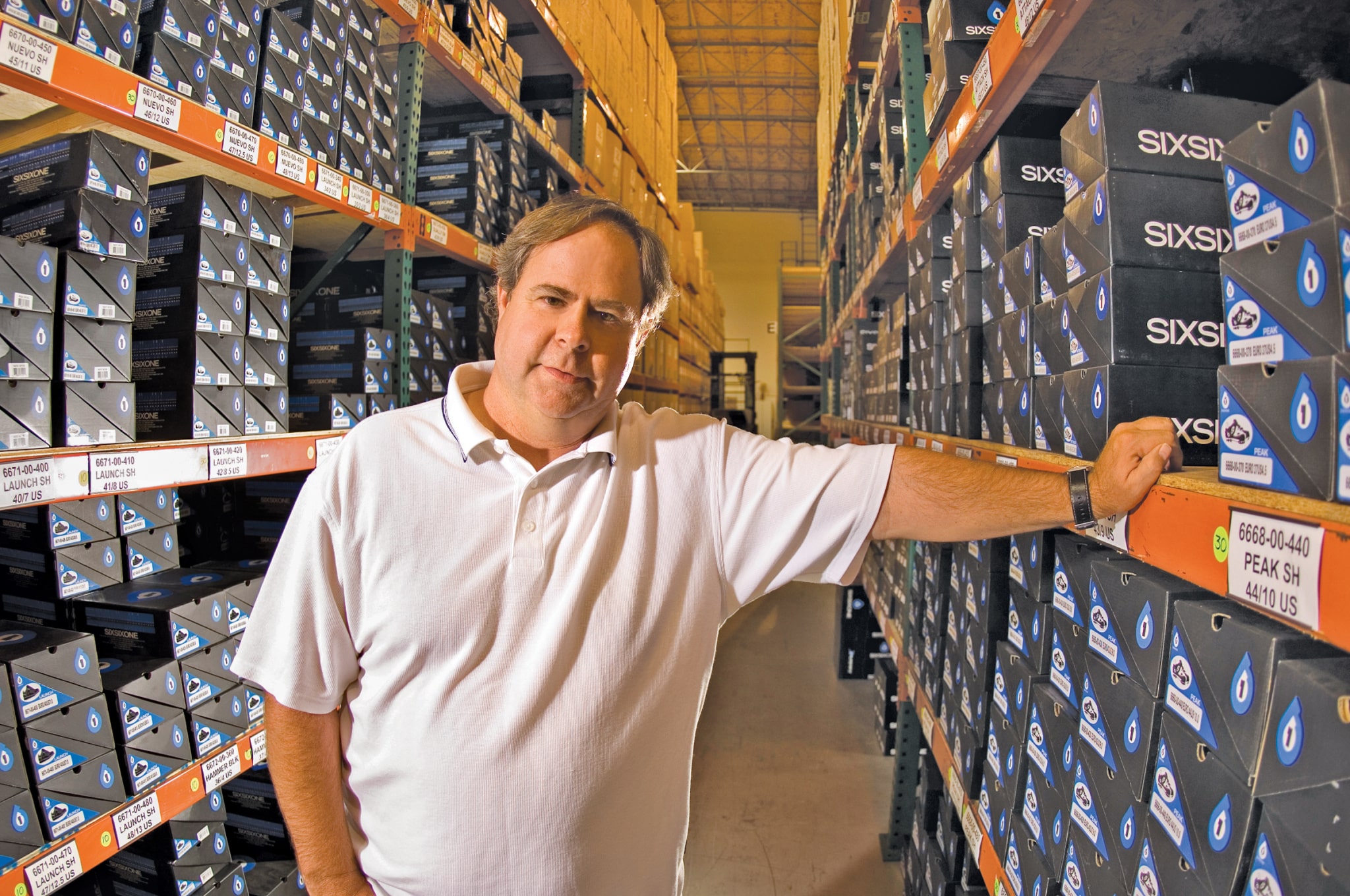 Over the years, Eddie’s warehouse has housed everything from Answer handlebars, Answer gear, SixSixOne products, Matrix Concepts bike stands, Atlas braces, ARMA Sport Nutrition and many other brands.
Over the years, Eddie’s warehouse has housed everything from Answer handlebars, Answer gear, SixSixOne products, Matrix Concepts bike stands, Atlas braces, ARMA Sport Nutrition and many other brands.
BY JIM KIMBALL
EDDIE, I CLEARLY RECALL SEEING A PHOTO IN MXA BACK IN THE DAY OF YOU RACING A FACTORY KAWASAKI KX125, BUT I DON’T KNOW HOW YOU GOT THERE. It is interesting. Life sends you in different directions than you would ever think you would be involved with, if that makes any sense. I grew up in Southern California, and my motorcycle journey was unplanned and very odd. My parents bought a new home in a place called Canyon Country, California. We moved into the house, and our neighbor Tom happened to have a Husqvarna motorcycle in his garage. I was in sixth grade, and he would work on that bike in the driveway. I took a liking to that motorcycle. Tom was an older guy, married with his own children, and one day he said, “Eddie, I am going to a motocross race at Hope Town. Would you like to come?” This was back in 1968 or 1969. Joel Robert, Gary Bailey, Torsten Hallman, Lars Larsson and all the Swedes were there. I was so excited and enamored that I thought, “Wow, this is really cool.”
DID THAT GET YOU RIDING? Yes, it just happened that another neighbor down the street had a mini-bike, and I traded my drum set for it. I did not tell my parents. They came home from work and said, “Eddie, where is your drum set?”
I said, “My buddy is using my drums, and I am using his mini-bike.” I was afraid to tell them I traded straight up!
HOW WAS IT OWNING YOUR OWN MINI-BIKE? I pushed it more than I rode it because it was breaking all the time! But later I worked in an electronics plant and was able to buy a motorcycle. My first real bike was a 125cc Yamaha AT1. The riding progressed from there. I started racing in the desert while still in high school.
DESERT RACING WAS BIG THEN. Yes, for sure. Later, in my high school math class, the kid behind me, who had motorcycle stickers on his notebook, said, “Hey, Eddie, my dad is picking me up in front of the school at 2 p.m., and we are going to Ascot Raceway to race motocross tonight. Do you want to come?”
I said, “Heck yeah, I want to come.”
He said, “Meet me at the front of the school. My dad will have the motorhome. Bring your bike if you want to race.” So, I ran home at lunch, called my mother at work and said, “Hey, I want to go race my motorcycle tonight at Ascot.”
I was hooked from there. That is all I focused on. I did not want to go to school, did not want to talk to my girlfriend and did not want to play basketball. My dad was a professional basketball player, but I only wanted to ride my motorcycle.
DID RIDING COME EASILY TO YOU? I have always been agile and was fortunate enough that I could go ride out of my driveway. In Canyon Country, there were only 20,000 people in the whole area. I made my own tracks. I had all this raw land that was hilly and had all kinds of different terrain to ride on.
HOW WERE YOUR EARLY MOTOCROSS RESULTS? I was not any good in the beginning, but I kept working at it because I could ride all the time. I quickly moved from the Novice class to the Intermediate class to the Expert class, and then to the Pro class. Back then there was no formal points system. You just decided when you wanted to move to the next level. I determined early on that this was something that I wanted to pursue, and it became a passion of mine quickly.
WERE YOU STILL IN HIGH SCHOOL? Yes, but racing became a full-time job quickly, because I ended up getting sponsored by some local dealerships. Back then, in Southern California anyway, you rode all three classes if you were serious about it. We raced five days a week back then in SoCal. I think we took Monday off to work on the bikes. You traveled throughout Southern California racing back then, and it turned into a full-time job. I left school in the 10th grade because this was something I wanted to do.
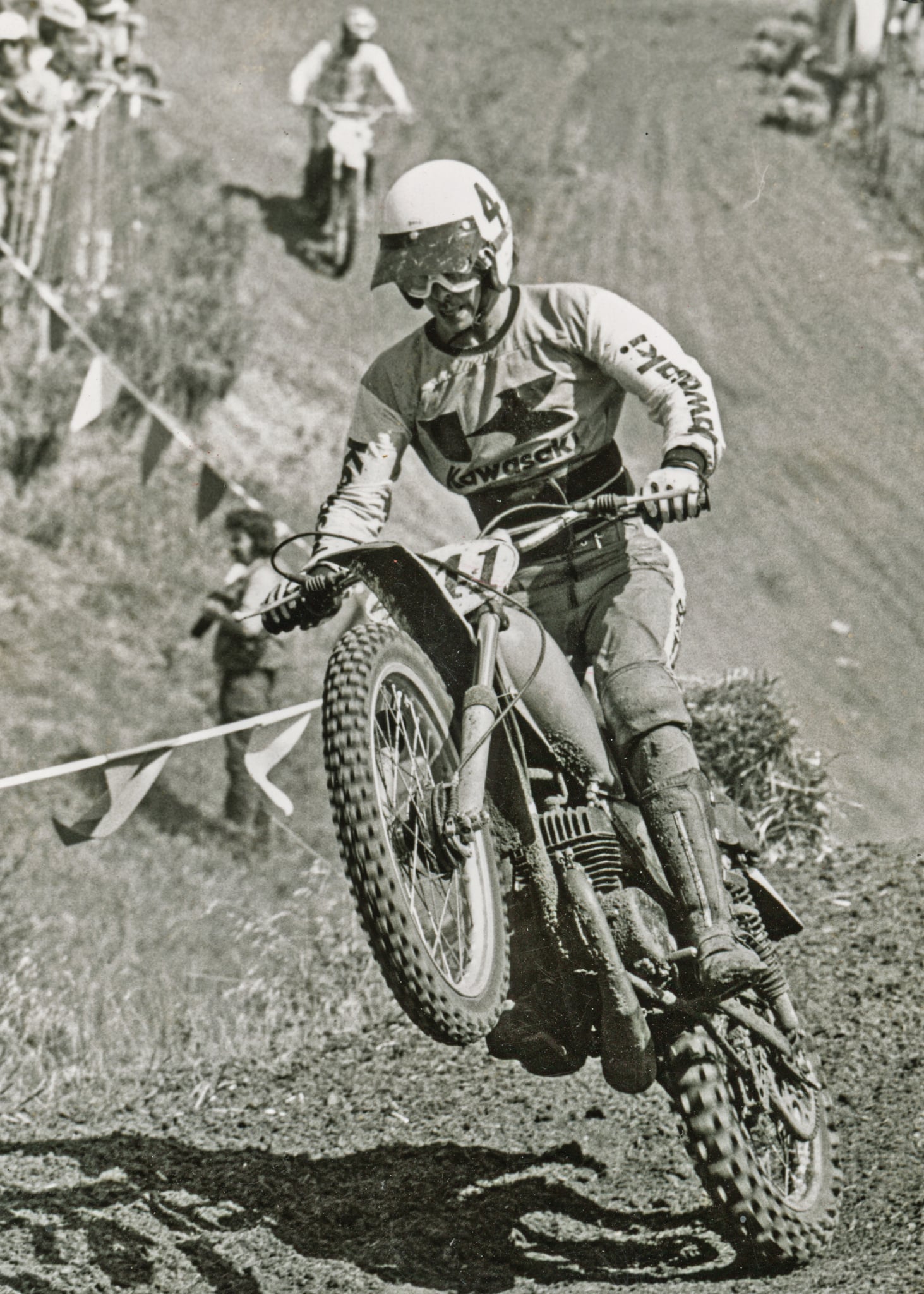 Eddie got his start as a factory rider at Kawasaki of Canada. That brought him to the attention of the Kawasaki USA team for the 1974 AMA 125 Nationals.
Eddie got his start as a factory rider at Kawasaki of Canada. That brought him to the attention of the Kawasaki USA team for the 1974 AMA 125 Nationals.
COULD YOU MAKE DECENT MONEY IF YOU WERE DOING WELL? Well, I lived at home. My parents had to subsidize some of that effort, but we were able to make enough money to get from one race to the next. I had sponsors, so I did not have to spend a lot of money on parts and bikes. But, it was not until about the fall of 1973 that Kawasaki of Canada and I got together. I had a friend whose parent moved from California to Flint, Michigan. His dad worked for one of the big automakers. He was racing for Kawasaki of Canada. He got to talking to the guys there and said, “My buddy Eddie Cole is winning a bunch of local races in Southern California. He got me a Kawasaki ride, and I lived in Scarborough, Ontario, Canada. Kawasaki rented me a house, and I rode for them in early 1974 on a production bike. I did well up there, and I got to know the guys at Kawasaki in California because I was a local guy here. When they heard I was riding up there and doing well, they asked me to come back and race a factory 125 rotary-valve bike here. The 125 Nationals were just getting started. I raced against Marty Smith, Bruce McDougal, and Chuck Bower, who were the three Honda factory guys, with me on a Kawasaki. Tim Hart and Jimmy Ellis were also there. The 125 class wasn’t that popular then.
“MY FIRST REAL BIKE WAS A 125CC YAMAHA AT1. THE RIDING PROGRESSED FROM THERE.I STARTED RACING IN THE DESERT WHILE STILL IN HIGH SCHOOL.”
WAS THAT THE BEGINNING OF THE AMA 125 NATIONALS? Yes. It began in California, then went to Utah and Kansas City, and finished in Ohio. There were only four races that year. In 1974, I actually made a living at it. I was doing pretty well, but the Kawasaki unfortunately used a rotary-valve engine. Although it was the best-handling bike that I ever rode and as fast as it could be, the engine would only last 2-1/2 motos. Back then, the classes had three motos. I was right there with those guys in the top three or four every moto, but in the last moto with only a few laps to go, the engine would blow up every time. My results were not good in the final National standings, but I got a lot of experience and exposure. I did well but could never beat Marty Smith. He was like a light year ahead of us all back then.
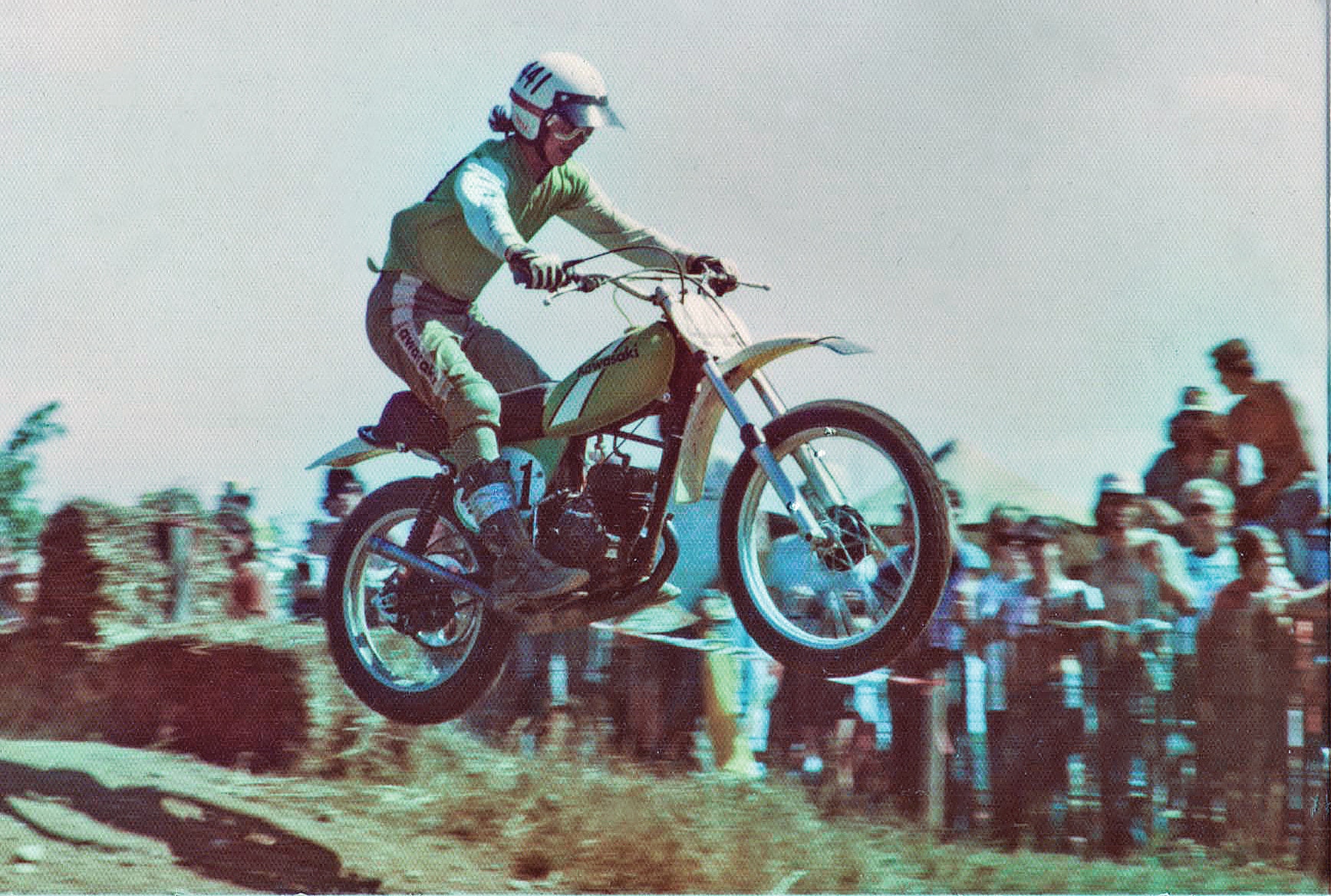 After Kawasaki, Eddie raced a 250 Penton before it became KTM. He was friends with Bob Hannah, who had signed with Yamaha. Bob got Eddie a Yamaha support ride and agreed to let Eddie sell a Bob Hannah Replica Answer handlebar.
After Kawasaki, Eddie raced a 250 Penton before it became KTM. He was friends with Bob Hannah, who had signed with Yamaha. Bob got Eddie a Yamaha support ride and agreed to let Eddie sell a Bob Hannah Replica Answer handlebar.
AFTER PARTING WAYS WITH KAWASAKI, WHAT DID YOU DO? I kept racing, but not at the factory level. I rode for Penton West. They had come out with a 250. It had a yellow tank on it and was one of the first Pentons in the U.S. A guy named Buck Murphy and I both had 250s. That was the beginning of KTM being introduced. I also rode 125 Pentons and did well at some early Nationals on it. Then I raced a Bultaco for a little bit. Bob Hannah became a good friend because we were always racing against each other. He was a Suzuki guy, and I was a Bultaco guy. We came across each other all the time in Southern California. After he signed with Yamaha, he helped me get a Yamaha support ride. Coincidently, I had recently started Answer Products by then.
SINCE YOU MENTIONED ANSWER PRODUCTS, I HEARD YOU STARTED ANSWER WITH $100. IS THAT TRUE? That is exactly true. I was racing for Bultaco when they had the first Superbowl of Motocross. I had a 250 but not the 360. Bultaco wanted me to race the 500 Support class, which was the larger class. The 250 class was the international class. Bultaco sent me an engine from Spain, and it shifted on the opposite side. I tried to ride it to get ready for the Superbowl of Motocross, and was stepping on the brake instead of the shifter and the shifter instead of the brake.
I practically killed myself. I told Bultaco, “This is not possible. I can’t do it.”
Bultaco said, “Go to Steve’s Bultaco in Van Nuys and see if they can help you with an engine designated for the USA market.”
When I got to Steve’s Bultaco, they didn’t have an engine for me, but they said, “There is a kid that just bought a brand-new 360 and took it home yesterday. His name is Fred Hoblit. Call him up, and maybe you can work out a deal with him to use his bike.”
I called him and said, “Hey, I am Eddie Cole. Fred, can I use your bike? If I break anything, Steve’s Bultaco will repair it. You can come to the races with me, and I will split whatever I win with you.” A week later we met at Indian Dunes, and I practiced on his bike. He built Bultaco swingarms in his garage that were able to accept 14.5-inch shocks. Back then, Bultacos came with these odd, 17-inch-long shocks, and there were no springs available for them. You had to use those shocks because that is the way the swingarm was configured. Fred built a swingarm that moved the shock mounts forward and used regular 14.5-inch shocks.
HOW DID IT GO AT THE SUPERBOWL OF MOTOCROSS? I got seventh or eighth, and Fred and I thought we were millionaires. We made $600 and split it. On the way home, I said, “Dang, Fred, that swingarm works so well. Would you build me one of those?”.
He said, “Sure, I will build you one.”
After another 20 miles down the road I said, “Fred, let’s build six of them, and I can sell them at the races.”
All Bultacos had the same problem. He took 100 bucks out of his share of the winnings, and I took 100 bucks out of my share, and we drove to a place called Tube Sales.We bought some tubing, cut it up, and went to my friend Billy Payne, who was a famous Maico rider in Southern California who had a welding shop. That weekend we went to the race, put a sign up on the back of the van, and I sold all six of the swingarms in one day. Now we had 1200 bucks. So, we bought 1200 bucks worth of material at Tube Sales, and that is how we started Answer Products with 100 bucks each.
HOW DID ANSWER PRODUCTS GROW SO QUICKLY? I was still young at that point, and we started in Fred’s garage, just the two of us. Then, we moved to our first 700-square-foot building and hired a couple of part-time people to help us.
“BOB SAID, ‘OKAY, I AM IN.’ THAT WAS OUR AGREEMENT, AND THAT IS HOW WE GOT INTO THE HANDLEBAR BUSINESS. FROM THERE, THINGS REALLY EXPLODED.
We worked seven days a week while still racing on the weekends, and that was our life for a few years. Originally, we did swingarms only. Then we decided to make handlebars. When I was with Bob Hannah at the Florida Winter-Am, I saw that all of the factory Yamaha guys had these special handlebars that were gold in color on their works OW Yamahas.
I said, “Bob, I want to do an OW low handlebar and a OW high handlebar. I want to put Rick Burgett’s name on the high one, because he was a bigger guy, and I want to put your name on the low one.”
My dad was an avid golfer, and if Jack Nicklaus’ name was on something, he had to have it. I told Bob, “We will sell Bob Hannah handlebars at Answer and give you 0.50 cents a bar.
Bob said, “Okay, I am in.” That was our agreement, and that is how we got into the handlebar business. From there, things really exploded.
WHAT CAME NEXT? Once we started the handlebar program, we did swingarms for other brands and added aluminum silencers. We had around 30 people working for us before we knew it. Then we decided to get into the apparel business, and we had a local person do some of that for us. One thing led to another, and we bought our first building and moved to Santa Clarita. By then we had 50 employees. The company took off once we started selling motocross gear. We had a good reputation in hard parts, which helped us get traction early on in the motocross apparel side. Back then, JT Racing was the big dog. Malcolm Smith was second, and Fox was doing pretty well also.
WHAT ABOUT YOUR RACING CAREER? By 1977 it was clear to me after a few knee operations that it was time to get serious about working for a living. Answer Products became my full-time passion in 1978, and that is when I started hiring some professional managers to help me. We were up to 100 employees by then.
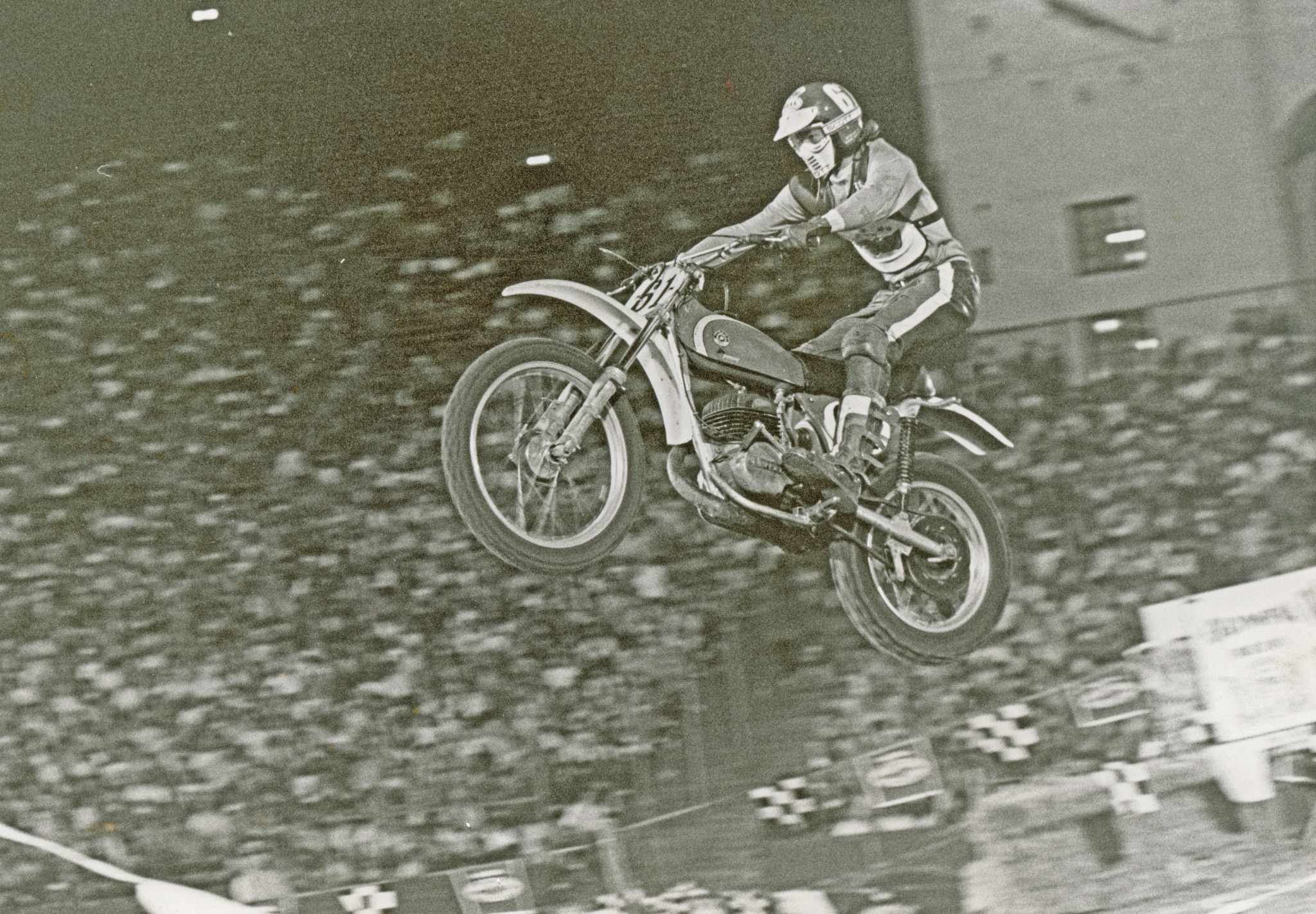 Eddie borrowed a Bultaco from a local guy for the first Superbowl of Motocross. Little did he know that they would become business partners.
Eddie borrowed a Bultaco from a local guy for the first Superbowl of Motocross. Little did he know that they would become business partners.
HOW DID ANSWER BECOME A HANDLEBAR GIANT? I became a handlebar connoisseur. Handlebars became my passion from the time I started with the Bob Hannah handlebar all the way back to when we were still in the garage. We did add the Alumilite handlebars because I wanted to compete with Renthal for the aluminum handlebar market. We developed the Alumilite bar for motocross and mountain bikes. We had half the factory race teams and Renthal had the other half.
WHY DID YOU EVENTUALLY SELL THE COMPANY? I never thought about selling the company. It was my baby from the very beginning. There were some changes going on within the motorcycle industry, as some of the larger distribution companies were looking to expand their product lines. Tucker Rocky was our largest distributor at the time. They approached me and said, “We are looking to grow our business, and to do that we need an off-road apparel brand. We would like to know if Answer is for sale.”
Suddenly, multiple people were approaching me saying, “Hey, do you want to sell your company?”
Malcolm Smith had sold his company to Tucker Rocky at this time. The same people who bought Malcolm Smith Products approached me about selling Answer Products to them. I decided that I would at least go through the negotiation process with them. Tucker Rocky came to visit me here in Valencia, and I really liked what they had to say. They were not planning to resell the company. They were going to leave us in Valencia. They were going to leave us alone and give us more capital to grow. I had all these other ideas that I wanted to do, and I was not going to have to be personally responsible for all the debt that it would take to get the company to the next level. They were going to pay me more money than I had ever made. I had a young family at the time, and it just made financial sense for me to do it. I was going to get to keep my job, so I had the best of both worlds from my perspective. I could finally step back and enjoy life.
BUT YOU DIDN’T STAY RETIRED LONG, DID YOU? You are right. My retirement lasted about a week. Later we started SixSixOne with some friends while eating pizza at a little place called Chi-Chi’s. On a napkin, we drew up the SixSixOne logo. Six-six-one was our area code. In a flash, I had started a brand-new company. I hired some people, and away we went.
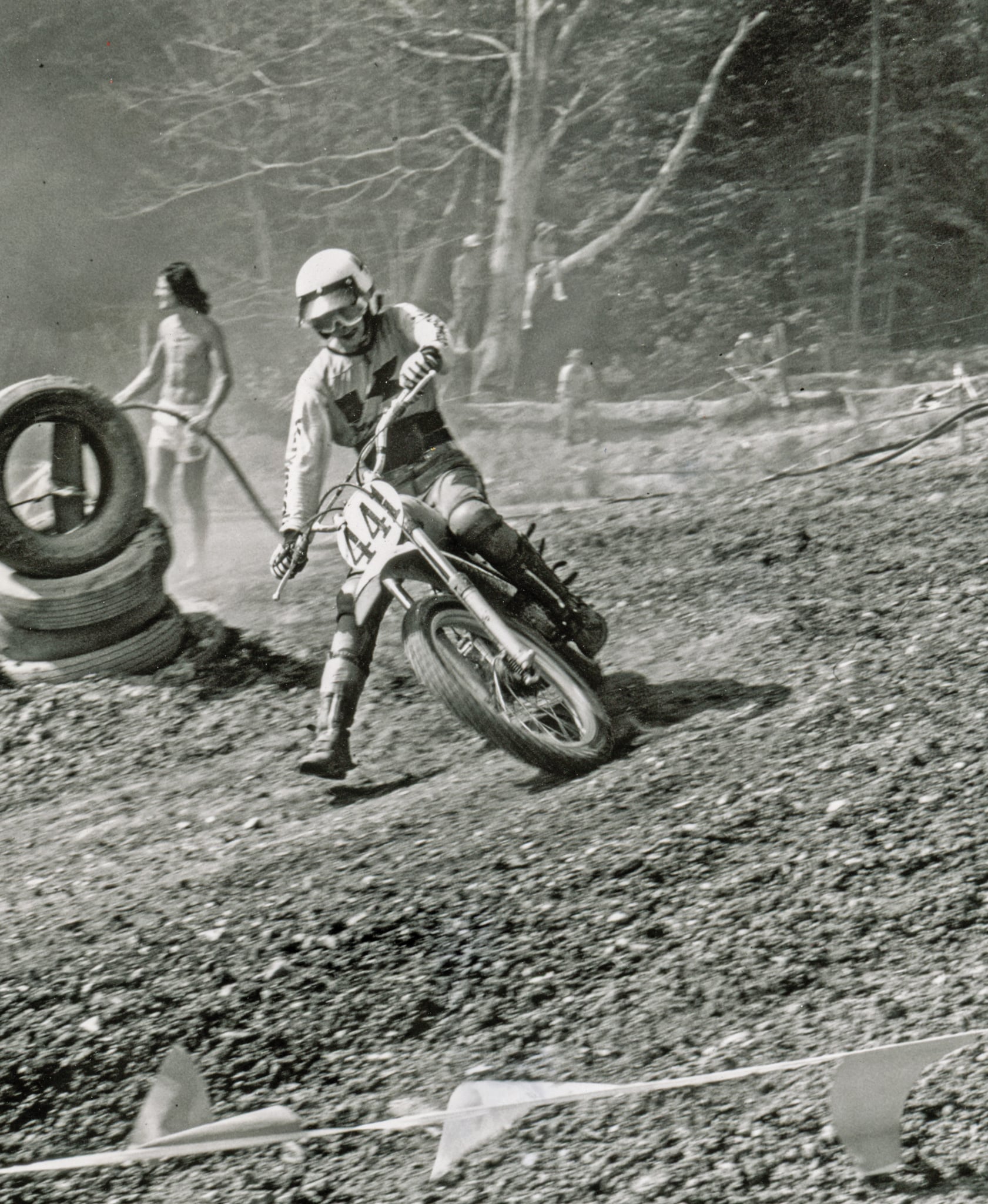 The prototype Kawasaki KX125 that Eddie raced had a rotary-valve engine and a lifespan that could not finish the three-moto format of the early 1970s.
The prototype Kawasaki KX125 that Eddie raced had a rotary-valve engine and a lifespan that could not finish the three-moto format of the early 1970s.
WHAT WERE YOUR PLANS FOR SIXSIXONE? SixSixOne started out as a company called AXO Cycling. Jim Hale was a racing friend of mine, and he had started AXO America as a boot and apparel company. We were fierce competitors. I had some ideas for a cycling brand, and I bought a license from AXO Cycling to do AXO cycling shoes and gloves. It exploded overnight when we made body protection for mountain bike riders. We decided to expand that into off-road motorcycle protection—chest protectors, elbow guards, knee guards and kidney belts. I worked on that for 10 years, then sold the company to a large equity group.
WHAT CAME NEXT? I was sitting around at 40 years old asking, “What now?” My two sons, Chad and Cameron, had grown up in the motorcycle business, so we started a company called Matrix Concepts. I became the managing director at Group 6 USA, LLC. I oversee Matrix Concepts, Atlas Brace Technologies and 101 Bike, an innovative urban e-bike startup.
“I WAS SITTING AROUND AT 40 YEARS OLD ASKING, ‘WHAT NOW?’ MY TWO SONS, CHAD AND CAMERON, HAD GROWN UP IN THE MOTORCYCLE BUSINESS, SO WE STARTED A COMPANY CALLED MATRIX CONCEPTS.”
AND YOU STILL DO MORE, RIGHT? People were always approaching me to do projects. I became either a consultant or an investor. I have been working on Seven with James Stewart for eight years, almost since the beginning of his company. James is a great friend. Ryan Villopoto brought me in as an investor in the Mobius knee and wrist braces. I put the structure together with myself, Ryan and a friend named Scott Watanabe, who had been the president of Scott USA before he retired. He is our CEO today. I also manage Gaerne Boots in the USA and helped with Airoh Helmets USA.
 There is no telling how many company vehicles Eddie has stood next to with one of his company’s logos on it.
There is no telling how many company vehicles Eddie has stood next to with one of his company’s logos on it.
ANYTHING ELSE ON YOUR PLATE? Jeremy McGrath approached me about helping on some projects he was working on. The first was ARMA Sport. That is a little bit outside my area of expertise because it is a nutritional product. I don’t have a lot of experience in selling that product, but I act as the CFO of the company.
The second project was a company called 101 Bike, which is a brand-new company that Jeremy McGrath and Bob Haro, a famous bicycle designer, started. It has been interesting for sure. Our biggest customer is Costco. That is the current project that I work on almost every day.
I have become very interested in trying to diversify and learn more about business. I have my hands in five or six different major projects now.
WE STARTED THIS INTERVIEW WITH MY MEMORY OF YOU ON A FACTORY KX125, BUT DIDN’T JODY WEISEL DO AN ARTICLE CALLED “THE 25 MOST INFLUENTIAL MEN IN MOTOCROSS”? DO YOU REMEMBER IT? Yes. It was a real honor to be named alongside people who are my idols. It was very unexpected that I was listed anywhere near the guys who made up that list. Motorcycling has been such an unexpected passion in my life! I don’t think I have ever worked a day in my life, because none of this has been work to me. It has been a journey, and it has been a great experience.
WHAT IS NEXT FOR EDDIE COLE? Well, I have two grandkids, and I still have all these projects that I am involved with. I would like to continue to stay active, work, and help my two boys and the other people that I have a lot of respect for, such as James Stewart. I want to continue doing what I am doing, and I don’t have any plans to slow down. I do want to spend more time with my grandkids. I work with my own kids every day, so I get to see them enough. Motorcycle people are different. They are genuine and honest, and I think that when you are around people like that, it is not work; it is just getting together and making things happen.


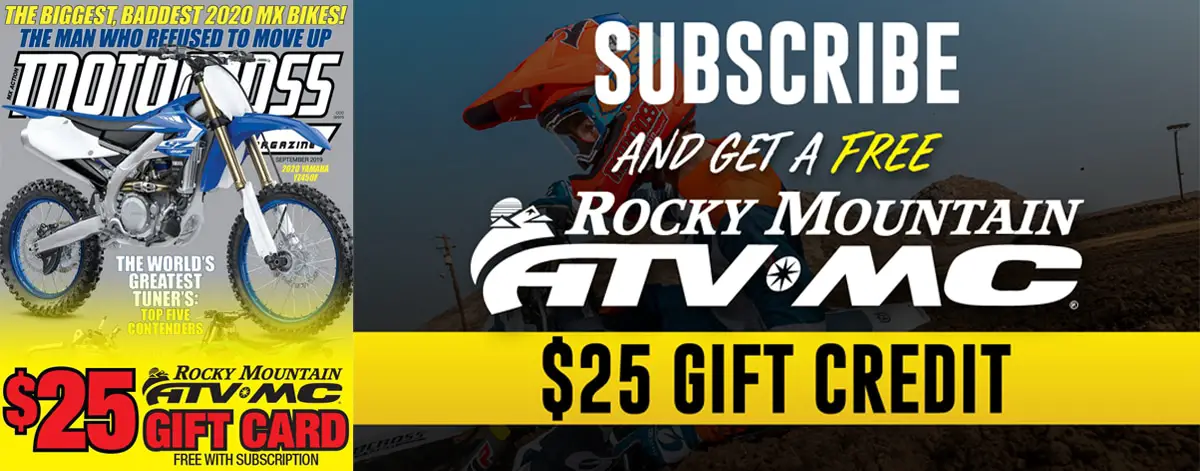
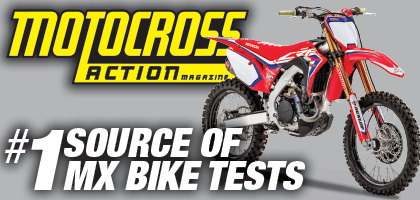

Comments are closed.